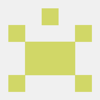When I started learning how to code, I wasn’t spending all of my time doing tutorials and building projects. Networking is a big part of finding a job these days since you never know what person you meet will be connected to the job you want. In tech, there are many ways to network. Many can be done remotely.
One of the most popular ways you'll see is through webinars. Companies, coding boot camps, and organizations are hosting webinars using a variety of software for social media. These webinar topics give participants information about finding tech jobs to demonstrations by instructors on how to build specific projects.
Webinars benefit everyone involved. Participants get valuable information while the companies and organizations attract potential students and customers for their services. During many webinars, companies, and organizations take time to go over what packages and services they offer.
Bootcamps often use webinars to show participants what some of their alumni have been doing since finishing the program and what is being offered. Some companies and organizations will even do free giveaways during webinars to those participating during the webinar or through social media using specific hashtags. One of the nice things about webinars is sometimes these events give freebies to all participants with valuable information such as guides, promotional offers resources suggested during the webinar, and much more.
Webinars are my favorite way to network since I always learn lots of information during each presentation. Some of my favorite webinars are hosted by Skillcrush. Skillcrush hosts webinars often with many presentations centering on freelancing, finding a job, managing money, and more.
These presentations feature a mix of different speakers from Skillcrush alumni to experts in a specific topic. Today's post is looking at one of the first webinars Skillcrush hosted in 2017. During this post, I'm going to share 10 of the most important points from this webinar. These points cover information newbies need to know to get started in tech and work towards the career they want.
What is this webinar about?
The first webinar Skillcrush hosted for 2017 was in January 2017 right after the new year. The webinar 2017: The Year of You featured Skillcrush founder Adda Birnir breaking down the timeline newbies should take to get started completing their goals and the timeline newbies need to follow to start getting those resolutions completed. This timeline breaks down what many students at Skillcrush follow to start making money and getting to a career they want.
During the webinar, Adda took breaks to do some Q&A with participants on tech jobs, resources, and lots of other great advice based on her experience coding or what she's seen at Skillcrush. When the webinar aired, Skillcrush had a giveaway where a few participants could win one of Skillcrush's career blueprints by sharing their favorite takeaways on social media. However, every participant didn't walk away empty-handed.
Skillcrush sent out an e-mail after the webinar with the replay and webinar slides. The e-mail also included a guide with all the resources mentioned during the Skillcrush webinar. If you are interested in taking a Skillcrush blueprint, Adda does use the webinar to go over some of the blueprints that best fit specific areas of the timeline she outlines and what skills you will learn.
She particularly looks at the latest Skillcrush deal at the time with the WordPress Bootcamp and what this package offers. While the blueprints have been tweaked since the webinar aired, the information in the webinar still gives a good overview of things you'll be doing in a blueprint. Still not sure? Don't be afraid to reach out to Skillcrush and chat with them.
Time for the takeaways!
There were tons of things Adda covered during this webinar that I can’t cover all of them in this post. If you would like to learn more, Skillcrush has the webinar available on their YouTube channel. You can't win a career blueprint or have access to the resources, but you can watch her presentation to see her suggestions and advice on getting started in tech.
If you don't have time to watch the entire webinar, this is where the takeaways come in. I put together a list of my favorite takeaways from the webinar. This list is great for anyone getting started in tech and can refer to it as they start working on the timeline Skillcrush suggests.
1. Getting involved in tech is not a linear path.
There are lots of tech experts besides Skillcrush who make the same point. We are used to predictable time frames and just knocking things out like a checklist. However, this isn’t the case in tech since every coding journey is different and won’t be the same as the person you hear about in the podcasts.
Remember the idiom saying that Rome wasn't built in a day? Well, this applies to tech as well since no one learns how to code in one day. Learning how to code is a lot like going on a road trip.
It does take time and the path to the destination is going to be different for every person. Many factors can impact how much time someone can dedicate to learning how to code. This can be being a parent, having a full-time job, or just being unemployed. Then there is the goal you want to accomplish.
What does that look like?
These goals are going to be different for every person so the path to getting these goals accomplished is going to be customized to get you where you need to go. The moral of this tip is you aren't a failure if you haven't reached a benchmark just yet. People learn at different paces so it isn't a competition.
Although the path you take might be different from what others are doing, everyone is going to get the same benefits. Skillcrush recommends newbies take a serious look at their suggested timeline to think about their lifestyle and circumstances to determine how much they can invest in learning how to code. This can better help you figure out what benchmarks work best for you and make a plan you can stick to.
2. Start with the foundation!
Month one of coding is about building your foundation. The foundation stage is all about becoming familiar with the tech industry and programming. This stage doesn't mean you should start coding.
Instead, you are trying to become much more familiar with the world you are going into and how people in tech talk. When you do this, you will be able to judge and see if a tech career is right for you as well as the areas you might be interested in. Think about this stage as shopping for clothes at a store.
You need to try on a pair of pants before you decide to buy them. Since you aren't coding in month one, you want to start immersing yourself in the tech industry. Sign up for webinars and newsletters.
Start looking at some job postings to see what you need to learn. This is a great time to start taking some classes about tech or programming basics. Skillcrush suggests this is the best stage to learn about web design, but I'll add to this point by suggesting you can take classes related to algorithms if you want to go the developer route. Algorithms are great exercises to help you think like a developer and build skills needed later on your coding journey.
Want another tip for month one?
Try a few free trials of different coding resources. Many companies like Skillcrush or coding bootcamps offer a free trial to show what their curriculum is like before you make a payment. Take advantage of these since it is a great way to see if their program is best for you and will help you reach your goals.
I did lots of research and free trials before I went with Skillcrush. This included doing their free bootcamp to even talking to the customer service team. These factors do affect what program you want to invest in and if you are getting value back in return for what you are paying for.
3. Begin building an online presence.
Networking isn't the only important factor in tech. A strong online presence is another factor you need to start working on since this is your identity on the web. In many cases, this is the first impression many people will get of you.
This doesn't just mean watching your social media for any embarrassing photos or posts. By month two, you need to start putting serious thought into what your online presence should be and how it should reflect what you are trying to accomplish. That means being active in tech and showing people you are interested as well as passionate about your coding journey.
Crafting an online presence can be simply posting things on tech on social media, writing a blog, or building. At Skillcrush, this is the point where you start building your portfolio site and start adding projects to your portfolio. You don't have to build a fancy portfolio site quite yet.
It can be a very simple page with just links to your projects or a site with multiple pages. The goal is to have something launched since it will start getting your name out in the tech world. People like to hire people so a good online presence shows you are invested in tech while providing some context on who you are.
One of the best ways I have built my online presence is by doing Twitter chats and starting to join tech communities. Tech communities are highly recommended when you are learning how to code since they provide all kinds of support you need along your journey. Skillcrush has great communities, but the one I recommend all newbies start with is Code Newbie. Code Newbie is all about building a community for people learning how to code or getting started in programming to help each other.
==> Click here to learn more about Code Newbie!
4. Start with HTML & CSS.
Month two isn't just about building your online presence. Now that you started your coding journey, it is time to start coding! There are a lot of opinions on what newbies should learn first.
Although you checked out job postings and did some research on what you need to learn, Skillcrush suggests starting with HTML & CSS. They are the building blocks of any website. Once you know HTML & CSS, you can start making money freelancing and adding projects to your portfolio. You can use what you are learning about HTML & CSS to even build your portfolio site.
5. When it comes to freelancing, start small.
Freelancing is an important part of the Skillcrush plan since it is very common for developers to freelance for a while until they get their first tech job. Freelancing is a skill and Skillcrush uses its curriculum to show students the best practices for freelancing as well as how to get started. Adda discusses the snowball effect during the webinar and how freelancing can start this effect by simply getting started by doing small projects.
This helps newbies start practicing charging for their work and figuring out what they want to charge for their services. If you are getting started in freelancing, Skillcrush recommends charging $100 for your first website. It is a low amount for creating a website, but it is practice for getting you started charging for your services.
Adda recommends not working for free since building a website does take time and the work you'll be doing has value you should get paid for. As you do more projects, your values are going to start changing to reflect the values you think are appropriate.
6. Think about what you like to specialize in.
By month four, you are ready to start thinking about what you want to specialize in. At this point, HTML & CSS has given you a sense of the development and design side. This will help you figure out if you should concentrate on web design or web development.
Skillcrush does remind students at some point you'll be expected to know both, but for now, it is best to concentrate on the one that speaks to you the most first. There are tons of resources available online to help you figure out which area you need to focus on. What is the difference between the two?
Web design is all about the way a website looks. Designers think about a website's identity by picking the fonts, and colors, and building a brand. Development is what powers the website.
It means building the website and recreating the design in code. Check out this blog post from Skillcrush below. It does a great job showing the difference between a developer and a designer as well as some stats about these jobs.
7. Try in-person and online forms of networking.
We talked about why networking is important earlier and technically you probably already started this by attending webinars and joining tech communities. If you haven't at this point, you need to get started since it will help you get to your end goal. The nice thing about tech is that networking doesn't just have to be in-person events.
Networking can happen at any time from joining classes to attending tech conferences. I have even heard stories of people networking by simply talking to people while waiting in line at Starbucks or the grocery store. Many of these conversations ultimately helped them get the job they were looking for.
Ultimately networking is something you are already doing and you don't even know about. By month five, it is time to try other forms of networking to meet more people in tech. This means going to in-person tech events or trying some online events.
This step is going to vary depending on where you are and your circumstances.
However, there is a networking method that will work for you. So feel free to try out different ways and see what works. Skillcrush once again has lots of blog posts related to networking which provide some tips for doing it so it is easier for introverts and newbies.
They even include some great websites you can use to start networking. In all honesty, networking is one of the challenges I face as a developer. I live in an area that is far away from most in-person networking events and there aren't very many tech meetups near me I can attend.
Therefore I make sure to do lots of my networking online. Social media plays a big factor in how I network. As I started learning how to code, I've been using Twitter a lot more for Twitter chats.
Since finishing my blueprints, I have started using Slack to talk to other Skillcrush alumni. Finally, I joined lots of Facebook groups. These groups are a great way to meet potential clients if you are freelancing or building contacts with others.
8. Do your homework on tech companies.
When it is month six, you should be looking at tech jobs and getting an idea of what you'd like to do. Finding a tech job can be overwhelming since job titles might overlap with each other and you don't know where to begin. This is where you need to start doing your research.
While a job posting can seem intimidating, it does offer you a glimpse of what you might be doing at this job and what the company might be like. Ultimately this will help you find the best fit for you. The internet has made it possible for anyone to get information about a company or job position.
There are tons of websites online that give people important stats about a job title or company. Websites such as Glassdoor and Indeed make it possible to see what current and former employees think about the company they are working for. Reading the good and bad reviews will help you paint a complete picture of what a company's culture can be like.
Then there is social media which allows people to connect with people working in companies they are interested in. If you aren't sure what company or job you are looking for, I suggest doing the flower exercise from the book What Color is Your Parachute. This graphic organizer is a great way to help you start doing your research and will get you thinking about the things you would like or not like from a specific industry or company. You can check out my takeaways from the book below or find your copy at your favorite place to get books.
9. Keep your resume, portfolio, and social media updated!
As you move through your timeline, you need to keep everything that creates your online presence updated. Skillcrush wants students to think of this as marketing themselves and show why they are the best candidates for the job. There are tons of resume writing resources.
Skillcrush has covered this topic several times on their blog and provided templates to help newbies write a resume for tech. They even have templates and resources for writing cover letters that get you noticed. Once you are satisfied with your resume, it will be easy to date your social media.
This doesn't mean changing the privacy settings. At this step, it means getting everything you are showing on social media consistent with what is on your resume. Before you even start changing your social media, google yourself and see what pops up.
This will help you figure out what you should do and how to shape your social media to best reflect the position you want. Are you posting things that reflect your interest in tech? Do you follow any tech organizations?
These are some of the things employers notice on social media. Finally, there is your portfolio. While it is tempting to add every single project to your portfolio, you want to focus on quality and put pieces that you are proud of.
You want to show projects you are building by freelancing or ones you made on your own. If you have done some client work, don't be afraid to add testimonials. Lots of freelancers and tech experts encourage newbies to include testimonials since they can help prove your skills.
10. Practice, Practice, Practice for Tech Interviews!
Like many things, interviewing is a skill that you'll get better at with lots of practice. On Skillcrush's timeline, month 8 is where you should start learning about the tech interview process. However, feel free to start earlier.
Tech interviews can be tricky because there are code tests, whiteboard questions, and portfolio reviews. This combination can easily cause the symptoms of impostor syndrome to start. Luckily there are many resources available for newbies to help them practice for tech interviews.
Skillcrush once again has got you covered with a bunch of blog posts and guides on preparing for a tech interview. Interviewing can seem intimidating and chances are you'll have more bad interviews than good ones. However, you want to approach each interview as a learning opportunity to see what kind of questions you'll be offered and better practice your responses.
When it comes to whiteboard questions and coding tests, practice how you would do the challenge but most importantly how you arrived at your answers. Remember those algorithms I talked about in the first takeaway? Algorithms are a great way to practice since these challenges are all about how to solve problems in code.
Conclusion
The 2017: Year of You webinar was a perfect webinar to start the new year. It goes over everything newbies need to know to get started in tech and what you can use along your coding journey to help you progress along the way. I only shared a few of the takeaways from this webinar so I highly recommend watching the full webinar when you get a chance. Adda goes over lots of great information about the process and actions you need to take every month.
This post was originally published on June 21, 2017 on the blog The Original BritishPandaChick. I made minor changes to the original post for DEV.







Oldest comments (0)